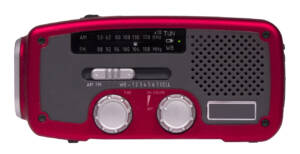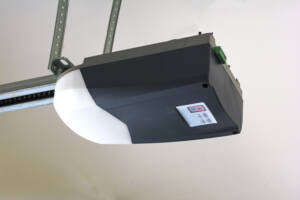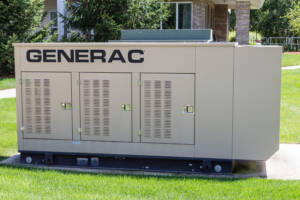Backup Power and Generators
PG&E PUBLIC SAFETY POWER SHUTOFF
PG&E is expanding and enhancing their programs to reduce wildfire risk by adopting a “Public Safety Power Shutoff” program. Beginning in 2019, electric lines that pass through certain high fire-threat areas in Lake County and California may be shut down during extreme fire-weather event to prevent ignition of new fires.
Learn more about this program and sign up for alerts from PG&E.
Lake County Fire Safe Council strongly recommends that all Lake County residents prepare for power outages before and during wildfires. We recommend the purchase and installation, at a minimum, of:
-
- Battery powered AM/FM/Weather radio
- Uninterruptible Power Supplies(UPS) for home telephones and internet/routers.
- Battery Backups for Garage door openers.
- Permanently (professionally) installed home generators
AM/FM WEATHER RADIO
 Lake County residents are encouraged to purchase and learn how to use a battery powered AM/FM/NOAA Weather radio. Some models can be charged via built-in solar panels or hand cranks for continued operations during long power outages.
Lake County residents are encouraged to purchase and learn how to use a battery powered AM/FM/NOAA Weather radio. Some models can be charged via built-in solar panels or hand cranks for continued operations during long power outages.
NOAA Weather Radio is an automated 24-hour network of VHF FM weather radio stations in the United States that broadcast weather information directly from a nearby National Weather Service office. Marin authorities may send out evacuation messages via weather radios. The National Weather Service sends out Red Flag Warnings and other extreme weather warnings by NOAA Weather Radio. Some models have the ability to sound an alert and flash lights when a warning is transmitted.
Monitor local radio stations like KCBS, KGO, KQED and KWMR for fire and emergency information, especially when other communication sources are unavailable due to power outages or infrastructure damage.
BATTERY BACKUPS
INSTALL BATTERY BACKUPS FOR GARAGE DOORS AND COMMUNICATIONS
 It’s very common for the power to go out before a fire strikes, since fire and winds can damage electrical infrastructure. You need to be prepared to communicate and escape, even without power. How will you receive warning at night if the power is out, and how will you open your garage door to evacuate if there is no power?
It’s very common for the power to go out before a fire strikes, since fire and winds can damage electrical infrastructure. You need to be prepared to communicate and escape, even without power. How will you receive warning at night if the power is out, and how will you open your garage door to evacuate if there is no power?
For garage doors, a battery backup should be installed. They typically cost less than $100, and can be installed by homeowners.
Check with your garage door opener manufacturer to see if they make a battery specific to your opener model, although universal models are available.
For home phones and internet connections, a “UPS” Uninterruptible Power Supply is a good option.
The larger the UPS is, the longer it will last when the power goes out. Consider keeping one dedicated to your home phone, and another dedicated to your internet cable modem.
Please consult with the manufacturer for specifics and installation instructions. Test regularly to confirm function.
GENERATORS
 Backup electric generators can be a part of your preparedness plan during wildfires, Public Safety Power Shutdowns, and other power loss events.
Backup electric generators can be a part of your preparedness plan during wildfires, Public Safety Power Shutdowns, and other power loss events.
Backup electric generators operate as a stand-alone power source and are not connected to PG&E’s power grid. Generators are typically powered by natural gas, gasoline, propane or diesel fuel. Solar systems typically do not provide power during outages, unless equipped with a battery storage system and special equipment to create a home-grid.
Standalone, gas powered generators during Red Flag Warnings or other fire weather events are not recommended. A permanently (professionally) installed, propane or natural gas powered generator is safer and less likely to spark a fire or expose residents to dangerous combustion gasses.
HOW TO OPERATE A GENERATOR SAFELY
-
- Never run a generator in an enclosed space or indoors. Most generator-related injuries and deaths involve CO poisoning from generators used indoors or in partially enclosed spaces. That includes the basement or garage, spaces that can capture deadly levels of carbon monoxide. Always place the generator at least 20 feet from the house with the engine exhaust directed away from windows and doors.
- If you’re using a generator, ensure your home has working, battery-operated carbon monoxide detectors. A carbon monoxide alarm provides a layer of defense against potentially deadly carbon monoxide poisoning.
- Don’t run a portable generator exposed in the rain. You can buy tents for generators that keep them shielded but well-ventilated, available online and at home centers and hardware stores.
- Before refueling, turn off a gas-powered generator and let it cool. Gasoline spilled on hot engine parts can ignite. Allowing the engine to cool also reduces the risks of burns while refueling. Lake County Fire Safe Council recommends permanently (professionally) installed propane or natural gas powered generators to improve safety.
- Extra diesel or gasoline must be stored properly. When you think you’ll need to use the generator for an extended time, you’ll want extra fuel on hand. Be sure to store fuel only in an ANSI-approved container in a cool, well-ventilated place.
- Don’t store gasoline near any potential sources of heat or fire, or inside the house.
- Adding stabilizer to the fuel in the can will help it last longer.
- Avoid electrical hazards. If you don’t yet have a transfer switch, you can use the outlets on the generator—providing you follow certain precautions. It’s best to plug in appliances directly to the generator. If you must use an extension cord, it should be a heavy-duty one for outdoor use, rated (in watts or amps) at least equal to the sum of the connected appliance loads. First check that the entire cord is free of cuts and that the plug has all three prongs, critical to protect against a shock if water has collected inside the equipment.
- Install a transfer switch before the next storm. This critical connection will cost from $500 to $900 with labor for a 5,000-rated-watt or larger generator. A transfer switch connects the generator to your circuit panel and lets you power hardwired appliances while avoiding the glaring safety risk of using extension cords. Most transfer switches also help you avoid overload by displaying wattage usage levels.
- Don’t attempt to backfeed your house. Backfeeding means trying to power your home’s wiring by plugging the generator into a wall outlet. This reckless and dangerous practice presents an electrocution risk to utility workers and neighbors served by the same utility transformer. It also bypasses some of the built-in household circuit protection devices, so you could end up frying some of your electronics or starting an electrical fire.
Resource credit: CAL FIRE and FIRESafe MARIN
